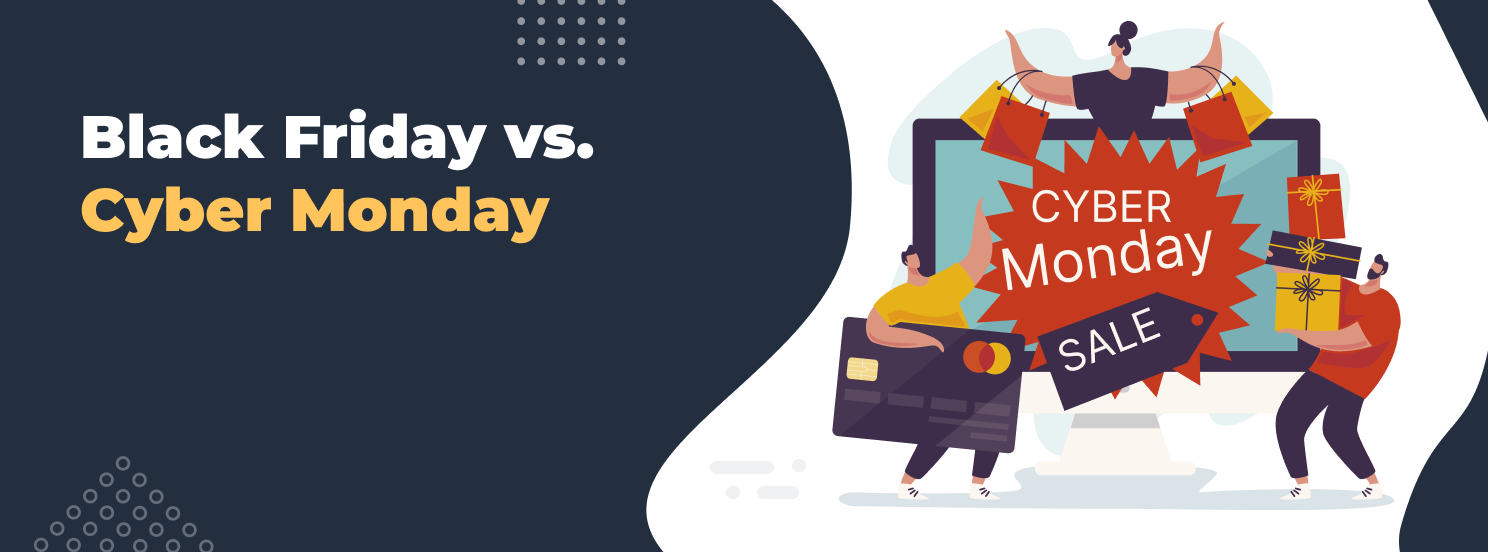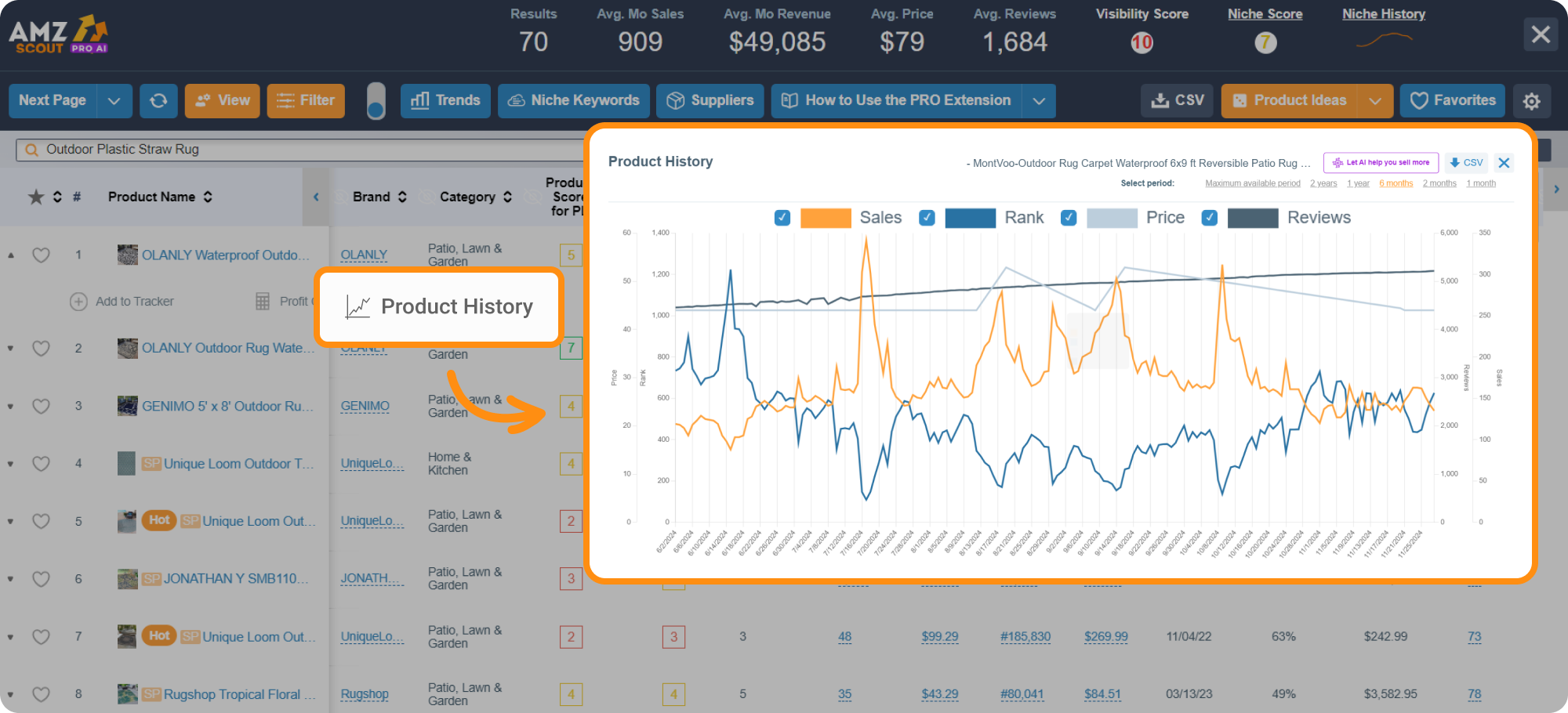
Amazon Deals 2025: Black Friday vs Cyber Monday Explained
Every year, the holiday shopping season kicks off with two major events that dominate online sales: Black Friday and Cyber Monday. For Amazon sellers and shoppers alike, knowing the differences and when to act can mean the difference between missed opportunities and record-breaking deals. From exclusive early discounts to last-minute online steals, these two days shape the e-commerce landscape like no others.
In this guide, we’ll break down everything you need to know about Cyber Monday vs. Black Friday, including key differences, timing, and strategies to shop or sell smarter on Amazon in 2025.
Table of contents
What is Black Friday?
When we talk about Black Friday, we’re referring to the blockbuster shopping event that each year launches the holiday spending season, both for bargain‑hunters and for sellers. On Amazon this moment has evolved into a major multi‑day affair tailored for its marketplace, third‑party sellers, and global shoppers.
For Amazon in 2025, Black Friday goes well beyond one day. According to Amazon’s own announcement, the “Black Friday Week and Cyber Monday” deal event kicks off on November 20 at 12:01 a.m. PST and runs through to December 1.This extended window gives sellers more runway and gives shoppers more opportunities,whether they’re looking to capture early deals or plan for last‑minute gifting.
If you’re selling (or shopping) on Amazon during Black Friday, here are the categories to watch:
Electronics: From smart home devices to TVs and gaming gear. Amazon lists up to 50% off select electronics in 2025.
Home & Kitchen: Deals include up to 55% off select home products and up to 50% on kitchen appliances.
Beauty & Apparel: Premium beauty products up to 50% off, and fashion deals hitting up to 50%.
Toys & Books: With the holiday season in mind, toys and books are also featured heavily in Amazon’s preview.
For Amazon sellers, these categories suggest where the volume is likely to flow in 2025, and by tweaking inventory or advertising strategies accordingly you can increase your chance of riding the wave rather than being caught behind it.
Looking back at 2024 provides good clues for 2025. Online spending on Black Friday in the U.S. hit $10.8 billion, up 10.2% from 2023. For Amazon specifically, it’s estimated that the platform made around $900 million in sales during its Black Friday window, representing roughly 17.7% of total Black Friday sales. Notably, over 60% of Amazon’s Black Friday 2024 sales came from independent (third‑party) sellers.
Why Black Friday matters to Amazon sellers:
Massive sales surge: Black Friday marks one of the highest-traffic days of the year, both online and on mobile, with deal-hungry shoppers ready to buy.
Early deal rollout: With discounts starting days before Friday, visibility and timing can make or break performance.
Mobile dominance: A growing share of purchases happen on phones, so optimized listings, images, and ad placements are essential.
Momentum builder: Success on Black Friday fuels algorithmic boosts and shopper engagement that carry into Cyber Monday and beyond.
In short, Black Friday on Amazon isn’t just “the Friday after Thanksgiving” anymore. It’s an extended deal period, packed with high‑volume categories and backed by data showing strong growth year‑over‑year. For Amazon sellers and shoppers alike, understanding this event’s structure is the first step, but acting early is what sets apart winners from the also‑rans.
What is Cyber Monday?
When we shift our focus to the online shopping whirlwind known as Cyber Monday, we’re stepping into the digital crown jewel of the retail calendar, especially for sellers and shoppers on Amazon. Although Cyber Monday falls on a single day (the Monday after Thanksgiving), in practice it has morphed into an extended digital deal period for Amazon and other e‑commerce platforms.
For sellers, Cyber Monday isn’t just “another day”, but rather the apex of the online deal cycle. In 2025, Amazon’s event will slot right after its Black Friday deal window, leveraging the momentum picked up during the lead‑in days. For planning purposes, mark the Monday after the U.S. Thanksgiving holiday (which in 2025 lands on December 1st) as the key day.
Last year set benchmarks: U.S. online spending on Cyber Monday hit an estimated $13.3 billion, a 7.3% year‑over‑year increase. In the peak hours (8 p.m.–10 p.m.), consumers spent about $15.8 million per minute. Mobile devices dominated: 57% of Cyber Monday sales were made via mobile, translating to around $7.6 billion via mobile in 2024. For Amazon sellers, this means mobile‑optimized listings, fast checkout options, and compelling visuals are non‑negotiable.
Why Cyber Monday matters for Amazon sellers:
Peak online attention: With shoppers already in “deal mode” from the weekend, Cyber Monday draws the highest concentration of digital‑only traffic.
Deal expectations are high: Shoppers anticipate heavy discounts; categories that delivered last year include electronics (≥30% off) and toys (26% off) among others.
Reduced physical‑store distraction: As more buyers skip stores and head online, Amazon sellers gain a strategic edge in visibility.
Extended lead‑in window: Smart sellers don’t wait till Monday. They launch early, build momentum, and “warm up” shoppers with previews and lightning deals.
All in all, Cyber Monday is the online shopping peak of the season for Amazon, locked in for December 1st, 2025 in broad terms, and supported by massive traffic, mobile dominance, and deep‑discount expectations. For Amazon sellers and buyers alike, being ready for that digital surge, as well as seizing the moments leading into it, can make the difference between a good season and a standout one.
Key Differences Between Cyber Monday and Black Friday
While both Black Friday vs. Cyber Monday dominate the holiday shopping calendar, they cater to slightly different audiences, shopping habits, and seller strategies. Understanding these nuances can help Amazon sellers plan smarter, and shoppers know exactly when to strike for the best deals. Here’s a clear breakdown of the key differences:
Timing and Duration: Black Friday traditionally kicks off the weekend right after Thanksgiving, often extending into a multi-day event on Amazon, while Cyber Monday is focused on the Monday after Thanksgiving. Amazon’s approach has blurred the lines, offering early deals leading into both events, but timing still affects buyer behavior.
Shopping Medium: Black Friday started as a mix of in-store and online deals, whereas Cyber Monday is almost entirely digital. For Amazon, this means Cyber Monday sees a spike in online traffic and mobile purchases, while Black Friday attracts shoppers browsing for early deals across multiple channels.
Deal Types: Black Friday often features steep discounts on big-ticket items like TVs, appliances, and home electronics. Cyber Monday, by contrast, emphasizes tech gadgets, software, and smaller online-friendly products. Amazon sellers can tailor inventory and promotions accordingly.
Shopper Behavior: Black Friday buyers tend to be deal-hunters seeking immediate gratification, often planning for gifting. Cyber Monday shoppers are more deliberate online shoppers, comparing prices and taking advantage of time-sensitive flash deals on Amazon.
Marketing Strategy for Sellers: Black Friday is about creating urgency and stocking high-demand products early. Cyber Monday rewards sellers who optimize listings for online search, mobile browsing, and digital promotions. For Amazon sellers, knowing
when is each peak day helps align advertising, inventory, and deal timing for maximum impact.
In short, while Cyber Monday vs. Black Friday share the holiday spotlight, their differences in timing, deal focus, and shopper habits make each a distinct opportunity for sellers and buyers alike.
Tips for Amazon Events: How to Shop & Sell Smarter
Whether you’re looking to snag the best deals or boost sales on Amazon, the Black Friday vs. Cyber Monday period requires strategy, preparation, and a keen eye on trends. Here’s a breakdown of actionable tips for both shoppers and sellers, plus a step-by-step guide on using the AMZScout PRO AI Extension to make smarter decisions.
For Shoppers
Start early. With promotions launching ahead of the official days and running through extended periods, keeping tabs on trending items and signing up for alerts on Amazon means you won’t miss the best offers.
Use comparison tools and watchlists. Especially for big‑ticket items or hot launches, create a list ahead of time and monitor price fluctuations so you can strike at the right moment.
Know which categories hit hardest. In the Black Friday period electronics, home & kitchen, beauty and apparel dominate. For Cyber Monday, online‑friendly goods and tech accessories show strong momentum.
Be checkout‑ready. Use one‑click options and update payment/shipping info now. When lightning deals go live, you’ll need speed.
Read the fine print. Some deals may require Prime membership or have limited quantities. Knowing the rules means you won’t be disappointed.
For Sellers
Prepare inventory and optimize listings early: Make sure high-demand products are ready to ship and listings are mobile-friendly.
Tailor strategy for each event:
- Black Friday: Focus on urgency, high-ticket items, and visibility.
- Cyber Monday: Leverage online-only shopping behavior, optimize keywords, and run digital campaigns.
Monitor trends and make data-driven decisions: Use tools like the AMZScout PRO AI Extension to check historical sales, price trends, and competition. This helps determine which products are likely to perform best, what discounts to offer, and how to time promotions effectively
Track competitors and performance metrics: Monitor clicks, conversions, and inventory levels to adjust your strategy in real time.
It’s clear from these tips that understanding and monitoring prices is crucial. AMZScout PRO AI Extension overlays essential metrics directly onto Amazon product pages, giving sellers real-time insights into sales trends. Here’s how to use it effectively:
Install the AMZScout PRO AI Extension. Add it from the Chrome Web Store. It helps sellers make data-driven decisions by providing product and market insights in real time.
Open an Amazon product page. Once activated, the dashboard shows estimated monthly sales, price history, and competition data.
Analyze historical price trends. Review the Product History to compare past and present pricing. This ensures sellers avoid overpaying for inventory or relying on artificially inflated discounts.
Check additional seller data
Sales: Look at last year’s figures to gauge demand during previous Black Friday or Cyber Monday events.
Competition: Determine market saturation to avoid oversaturated niches.
Estimated profit: Use the built-in Profit Calculator to evaluate whether the product’s margins justify the effort.
By following these tips and integrating tools like the AMZScout PRO AI Extension, shoppers can confidently find the best deals, and sellers can maximize sales and profitability during the Black Friday and Cyber Monday events.
Final Thoughts
Navigating Black Friday vs. Cyber Monday doesn’t have to feel overwhelming. For both shoppers and Amazon sellers, understanding the timing, key differences, and top-performing categories can turn a chaotic sales period into a strategic opportunity. With the right preparation, a sharp eye on trends, and the support of tools like AMZScout, it’s possible to maximize deals, optimize sales, and stay ahead of the competition.
FAQs
What is the difference between Black Friday and Cyber Monday?
Black Friday and Cyber Monday differ mainly in timing and shopping focus. Black Friday begins the day after Thanksgiving and combines both in-store and online deals, often emphasizing big-ticket items. Cyber Monday, the following Monday, is primarily online, with tech, electronics, and digital-friendly products dominating. On Amazon, both events now span multiple days, but buyer behavior and product focus vary.
Which day offers better discounts for Amazon shoppers?
Discounts on Black Friday vs. Cyber Monday can vary by category. Black Friday typically features deeper deals on electronics, home appliances, and high-demand seasonal items. Cyber Monday excels for online-focused products, gadgets, and smaller tech items. On Amazon, the “best” day depends on what you’re shopping for, but monitoring both events and acting early often ensures the biggest savings.
When do Cyber Monday and Black Friday sales start on Amazon?
For 2025, Amazon’s Black Friday deals start on November 20 at 12:01 a.m. PST and run through December 1, while Cyber Monday peaks on December 1, with early deals launching in the days leading up. Amazon’s multi-day strategy means shoppers can find deals well before the official dates, and sellers should prepare inventory and listings in advance.










